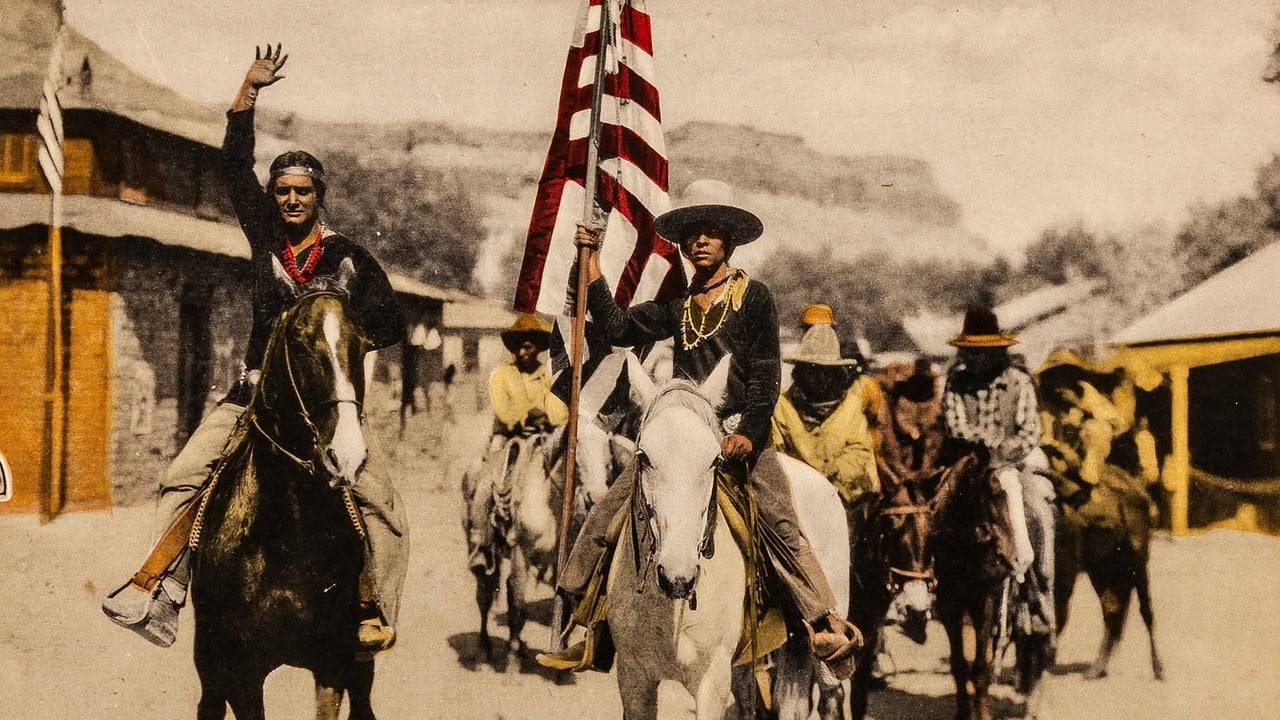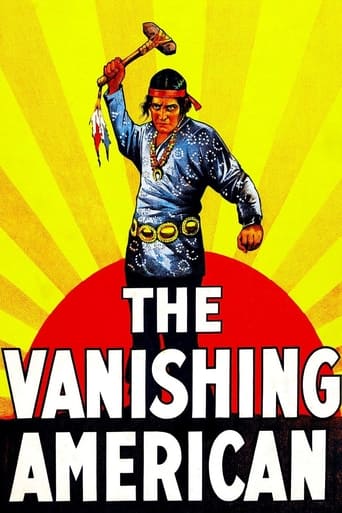

What a great surprise this movie is. This silent is a sleeper, a classic, wonderful film that does all the great things a soundless movie is capable of doing. Most importantly, this may be one of the most genuinely sympathetic movies ever about American Indians, because it does so without preaching, without portraying them as these mystical, magical humans, that, because they do things like use every piece of the buffalo they kill, are somehow better than all of us. You know the stereotype. It seems like Hollywood has never found a smart middle ground when it comes to portraying Indians: they are either savages or god-like innocents, but never normal. In The Vanishing American, the Indians are just regular people, largely pushed and pulled by fate and the inexorable spreading of the white way of life.Here, we see the hurt inflicted on Indians in small ways, like a farm being taken by the Indian Agent from one man while he is away at war, or a tribe member taken to be a servant of the Agent, and dying in his service, and the pain this causes his survivors; we feel the sadness of the characters without being forced through a lecture.At the same time, the movie is epic in nature, taking us through several millennia of time, and staging those massive battle scenes containing hundreds of extras that the silents, to me, do more effectively than the talkies ever could (perhaps it is the inherently haunting nature of all silent film that makes it seem so).Richard Dix is acceptable as an Indian leader, but Noah Beery steals the show, playing one of the slimiest and sleaziest villains ever; he even kicks an Indian sitting at his office's doorstop, and not once, but twice, to get him out of the way!This movie also takes patriotism very seriously; tears come to the school teacher's eyes when her class of young Indians says the Pledge of Allegiance. Religion, too, is treated with seriousness, as modern Hollywood never does; Christianity and the New Testament are held with reverence, but again, not too preachy.I highly recommend this film to all silent film affectionados, as well as those interested to see a unique and oddly progressive film about Native Americans that was made in the 1920's.Some small thoughts: (1) Early in the film, some Indians meet up with Spanish Conquistadors. The Indians are much more naked than we normally see them; No clothing at all up their hips: a little unnerving! (2) During an early battle scene, an invading tribe is attacking the cliff dwellers; the invaders climb tall ladders to reach the upper ledges. At one point, several ladders full of climbing invaders are seen; one of the ladders is pushed back, and a ladder full of invaders falls backwards, the men on it doomed to fall to their presumed deaths; if you look closely, though, the men on that ladder are clearly dummies.(3) When Kit Carson's soldiers first hurry off to battle, the first carriage we see pulled by horses and supporting a cannon clearly loses a wheel as it flies down a hill. (4) Racial incongruity #1: The white Richard Dix, with make-up on to darken his features to make him look like an Indian, wearing a soldier's World War I uniform and fighting in the trenches. Racial incongruity #2: an Indian Chief introduced in a title, played by Bernard Siegle! (5) When the Indian children in the school recite the Pledge of the Allegiance, they have their arms extended out in a manner that to modern eyes may seem like a fascist salute; is this how they used to do it? (6) At one point, Richard Dix is standing on one of the great stone arches of the American West, tossing feathers from his staff into the wind; the first feather he tosses is blown by the wind back to him, and sticks to his arm! He quickly swipes it away, though, and continues his scene.
... View MoreVanishing American, The (1925) *** (out of 4) Interesting drama from Paramount tells the story of Indians and how they fought to try and gain acceptance after having everything stolen from them. This film centers on Nophaie (Richard Dix), a man whose bravery leads the Indians into WW1 as well as fighting their battles at home. While this adaptation of Zane Grey's story isn't as great as one might hope, there are enough interesting bits here to make it worth sitting through. The film starts off with a nice prologue where we see various "forms" of people from the early caveman, to cave dwellers and then the Indian. These shorter sequences all look extremely good and especially the cave dwellers segment, which is real eye candy especially with the sets that really were built on cliffs. The entire look of this city makes you feel as if you're really there and this continues during the next sequence where we finally get to see the Indians and their early time here. We get some brief comic moments including their thoughts when they first see a horse but this soon turns to some battle sequences that are also well executed. I was surprised to see how graphic some of the violence was and this includes a scene with an Indian full of spikes through his body as well as another brutal scene with an Indian being shot and falling from a cliff. These early war scenes look extremely realistic as does the later one when Nophaie is fighting in WW1. Some could rightfully argue that this film's entire message of peace is pretty much wasted as the majority of the Indians here are played by white men with brown paint on. I think a lot of viewers today will see this and not even pay attention to the message here as they'll see it being double sided but it's important to remember when this movie was made and the fact that a lot of these message movies quite often appear just as racist as the film's their trying to go against. What really makes one scratch their head is the fact that this make up put on the actors is clearly melting during several scenes yet no one tried to touch it up to make it less obvious that we weren't seeing an Indian. With that said, Dix, Lois Wilson, Noah Beery and Malcolm McGregor all turn in fine performances. Each were believable in their roles with Beery clearly stealing the film and Dix coming off as a good lead even though he's be much better in 1929's REDSKIN. The biggest problem with the film is that it jumps around a bit too much and the love story itself is rather weak. The 110-minute running time could have been cut down without too much being missed. Movie legend would have one believe that John Ford discovered Monument Valley but that's certainly not the case as it's fully on display here. The images captured of it are truly breathtaking and these here are reason enough to sit through the movie.
... View MoreThis is a 'lost' twenties film that deserves to be seen today.This is one of the few exceptions of Western films that sympathetically portrays Native Americans and the abuses they suffered. You won't see another one like this until 'Broken Arrow' (1950). Unfortunately, many of these 'exceptions' focus on just one individual Indian and his personal story, rather than plead the Indians' case. This one mixes both, and is the only film that really attempts to put a Zane Grey novel on screen.Today, Richard Dix's emotional range here doesn't seem very great (checking out his other films it never did), but is that because his noble stoicism is deliberate? In one of his 'Job-like' scenes it almost comes to the surface; his high morality does surely come through.There's a mind boggling prolog of the entire history of Native Americans, including the Annazzazi Cliff Dwellers; the history of Indians moves through time ending with Dix's return to his native land after World War I.Another real high point is the dastardly Noah Beery who doesn't need sound to convey his two faced menace. You can imagine the cheers when he finally gets it (in the neck). His amazing range as an actor can be seen in 'The Mark of Zorro' (1920) where he is the hilariously buffoonish Sergeant, and of course, as Buster Keaton's competition in 'Three Ages' (1923) Keaton's spoof of 'Intolerance' (1916).Truly epic in scope, this is definitely a film that deserves to be seen today, and can be thoroughly enjoyed by all. I give it an 8.
... View MoreThis excellent movie far transcends its own genre, with a resourceful and detailed production that makes for a worthy treatment of some thought-provoking themes. Adapted from the Zane Grey novel, it easily does justice to the interesting story, but it is much more than just a good melodrama. Ambitous in its scale, in its time-span, and in its themes, it puts the main story into a context that is as interesting to watch as it is challenging to many of the common conceptions about the history of the American West.The main story features Richard Dix as a Native American on a reservation, who must contend with a wide range of persons from the 'white' races. Dix succeeds in making his character interesting, believable, and sympathetic. In particular, he does well with portraying the inner torment and longings of a perceptive and capable man who is forced by his environment to keep a lot of things inside.The 'white' characters work well, and they are well-chosen so as to avoid a simplistic portrayal of those who went west. Noah Beery plays the villainous Booker effectively, making his ill intentions clear even when his character is at his most charming, yet at the same making it believable that such a reprehensible character could so often gain the upper hand. Lois Wilson is rather meek, but she works well with Dix in the relationship that is at the center of the story.All of that would be good enough (and it doesn't even mention the beautiful scenery and photography in Monument Valley), but what makes the movie even better is that it is set in a broader context, which places the lengthy, heart-rending clash of cultures in the American West into a sweeping, far more comprehensive picture of the unending struggle of human cultures and societies as they rise and fall through the centuries. It balances a number of perspectives, and believably shows how complex the interplay between different cultures can be.The lengthy prologue, often detailed and interesting in itself, paints a convincing and often harrowing picture of the nature of human societies in their struggles and rivalries through the ages. It adds a depth rarely seen to the eventual conflicts between the expanding USA and the Native American nations, and even if it were made today, it would be a bold statement that challenges stereotypes of all kinds. True indeed is the movie's theme that human cultures come and go, and that those standing strong today will someday pass away, with only the earth itself remaining always.This movie surely deserves to be much better-known, for its top quality production of some often challenging material, its interesting story, and its themes that are worthy of careful and honest consideration. If it were filmed today, some of the details would probably be handled differently, but that is to a large degree a matter of style or fashion. The specific details are far less important than the movie's impressive depth and quality.
... View More